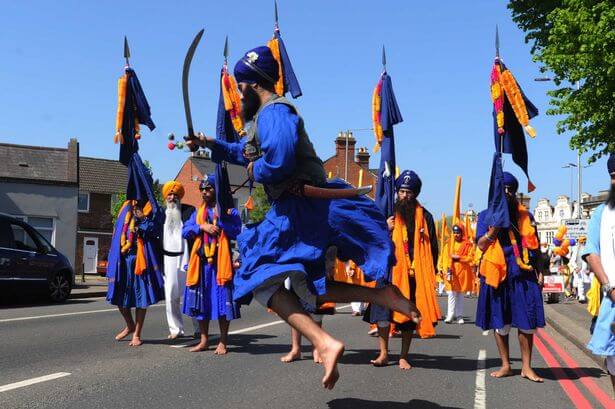Vaisakhi, also often wrongly pronounced as Baisakhi, is usually celebrated on 13 or 14 April every year. It is an important festival as the day marks the new spring year and also the formation of Khlasa Panth under tenth Sikh Guru, Guru Gobind Singh, in 1699.
For many Hindus, Vaisakhi celebrates the Solar new year, based on the Hindu Vikram Samvat calendar. Vaisakhi marks the first day of the month of Vaisakha.
Vaisakhi observes major events in the history of Sikhism and the Punjab region of the Indian subcontinent. The significance of Vaisakhi as a major Sikh festival marking the birth of Sikh order started after the persecution and execution of Guru Tegh Bahadur for refusing to convert to Islam under the orders of the Mughal Emperor Aurangzeb. This triggered the coronation of the tenth Guru of Sikhism and the historic formation of Khalsa, both on the Vaisakhi day. On 12 April 1801 (to coincide with Vaisakhi) Ranjit Singh was proclaimed as Maharaja of the Sikh Empire , creating a unified political state. Colonial British empire officials committed the Jallianwala Bagh massacre on a gathering on the day of Vaisakhi in 1919 in which about 1000 people were killed, an event that played significant role in Indian movement against colonial rule.
On Vaisakhi, Gurdwaras are decorated and hold kirtans. Sikhs visit and bathe in lakes or rivers before visiting local Gurdwaras. Community fairs and nagar kirtan processions are held, and people gather to socialize and share festive foods.
For many Hindus, the festival is their traditional solar new year, a harvest festival. It is an occasion for them to bath in sacred rivers such as Ganges, Jhelum, and Kaveri, visit temples, meet friends and take part in other festivities. In other parts of India, the Vaisakhi festival is known by various regional names.

